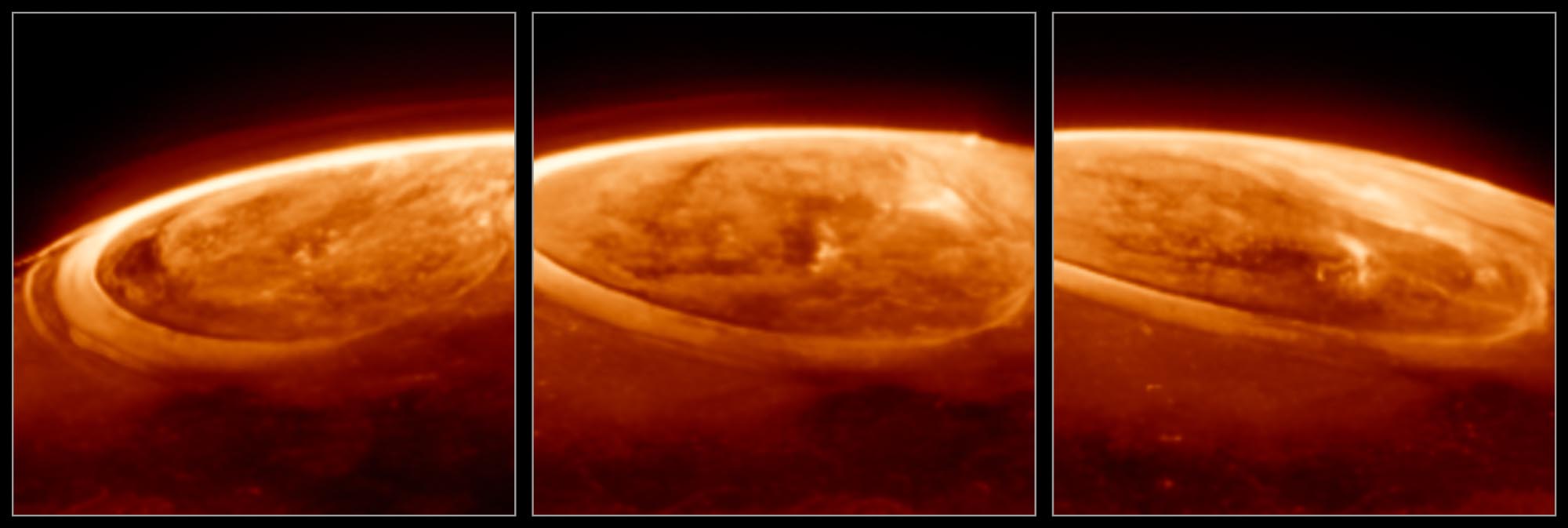NASA’s Webb Reveals New Details, Mysteries in Jupiter’s Aurora

NASA’s James Webb Space Telescope has captured new details of the auroras on our solar system’s largest planet. The dancing lights observed on Jupiter are hundreds of times brighter than those seen on Earth. With Webb’s advanced sensitivity, astronomers have studied the phenomena to better understand Jupiter’s magnetosphere.
Auroras are created when high-energy particles enter a planet’s atmosphere near its magnetic poles and collide with atoms or molecules of gas. On Earth these are known as the Northern and Southern Lights. Not only are the auroras on Jupiter huge in size, they are also hundreds of times more energetic than those in Earth’s atmosphere. Earth’s auroras are caused by solar storms — when charged particles from the Sun rain down on the upper atmosphere, energize gases, and cause them to glow in shades of red, green and purple.
Jupiter has an additional source for its auroras: The strong magnetic field of the gas giant grabs charged particles from its surroundings. This includes not only the charged particles within the solar wind but also the particles thrown into space by its orbiting moon Io, known for its numerous and large volcanoes. Io’s volcanoes spew particles that escape the moon’s gravity and orbit Jupiter. A barrage of charged particles unleashed by the Sun also reaches the planet. Jupiter’s large and powerful magnetic field captures all of the charged particles and accelerates them to tremendous speeds. These speedy particles slam into the planet’s atmosphere at high energies, which excites the gas and causes it to glow.
Now, Webb’s unique capabilities are providing new insights into the auroras on Jupiter. The telescope’s sensitivity allows astronomers to capture fast-varying auroral features. New data was captured with Webb’s NIRCam (Near-Infrared Camera) Dec. 25, 2023, by a team of scientists led by Jonathan Nichols from the University of Leicester in the United Kingdom.
“What a Christmas present it was – it just blew me away!” shared Nichols. “We wanted to see how quickly the auroras change, expecting them to fade in and out ponderously, perhaps over a quarter of an hour or so. Instead, we observed the whole auroral region fizzing and popping with light, sometimes varying by the second.”
In particular, the team studied emission from the trihydrogen cation (H3+), which can be created in auroras. They found that this emission is far more variable than previously believed. The observations will help develop scientists’ understanding of how Jupiter’s upper atmosphere is heated and cooled.
